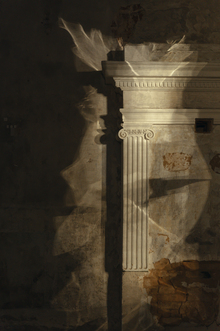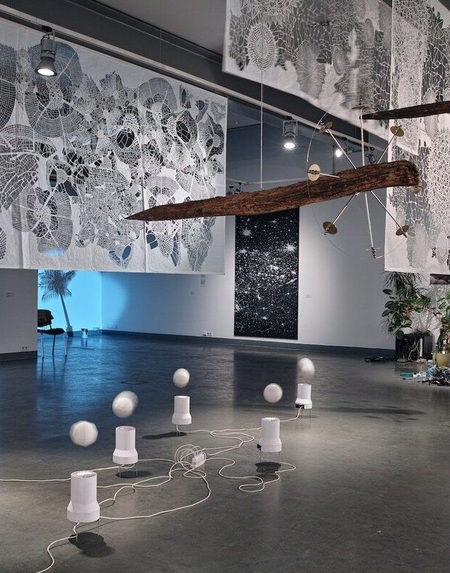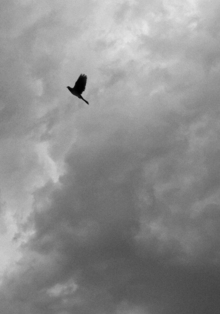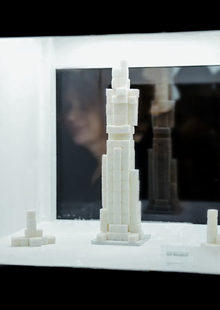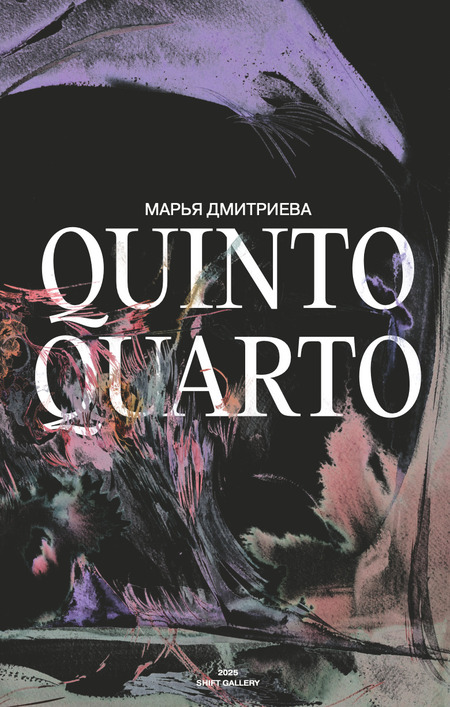
QUINTO QUARTO
Maria Dmitrieva’s personal exhibition at the SHIFT gallery. The expression «quinto quaarto», which led the exhibition (from Italian to «fifth quarter») at the same time, refers to several values, ranging from conventional cooking (so Italian butchers call giblet) to musical (size, intervals) and philosophical. For Maria Dmitrieva, this concept is a metaphor for excessive, unprovable, hidden — what goes beyond the Convention’s limits of perception. 2025
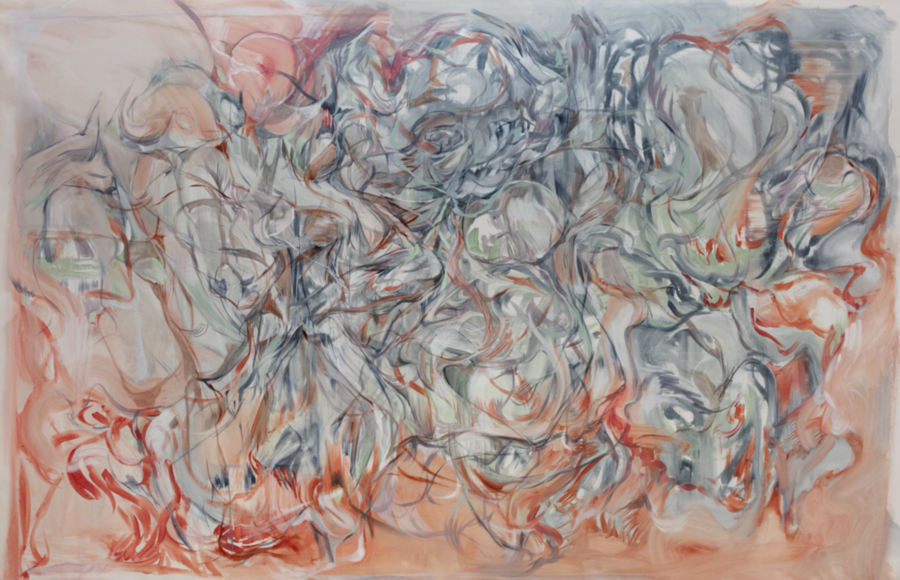
irrelevant to any kind of time, 2025
The new Marya Dmitrieva exhibition is difficult to describe in conventional concepts for today’s Russian institutional scene. Over the past decades, these concepts and categories are increasingly dependent on the concept of «projectivity». In other words, the artist ' s solo exhibition is often viewed primarily as a platform for a coherent conceptual statement, where specially designed works are combined with some kind of design, theme, concept or message. In the face of this fact, when the artist is expected to be «the concept of the project,» Maria questions the situation: how is it possible to speak in a context of current reality? Why do you need it? Who’s his recipient? And who’s speaking? This situation resembles an incident (from lat. incidentis to «accident») in which something happened, and the artist (and his partner, the curator) is expected to explain who did what and how? And the most important thing is, what does all this mean? Maria Dmitrieva ' s art practice cannot, by its very nature, be subject to the chains of design. Its essence is the process and dynamics that emerge in the field of interaction with a work that resembles an endless struggle with material. For Mary, the process of creating the work is highly physiological. Initially, the artist does not even see the optical image itself, as much as its flesh — a substance that grows in the future with outer matter. And the images are born from the observation of variability and plasticity in nature: «the way the growth lines of the crawling plants are built, the wind blows the tulle. Sign trajectory, shadow abris. The closest thing to the concept of image is music, and I see it well, " says the artist. It is a very difficult task to present this dynamic stream at an exhibition (to finish). A flow in which there is an eternal clash of forces, and which concludes the very essence of Dmitrieva practice. The exhibition is just an end-outline of one of the states of this stream. Temporal phase. The shell. Dumped snake skin or wet frog skin, from which the living body has slipped away. © Ilya Kronchev-Ivanov
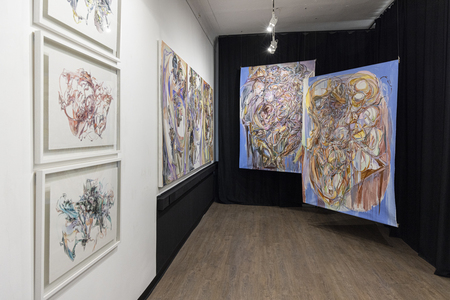
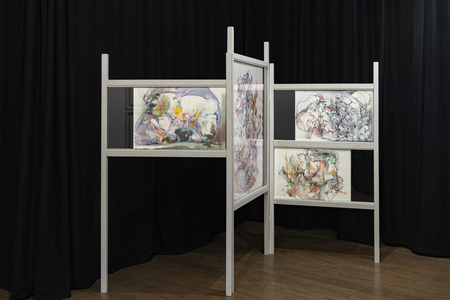
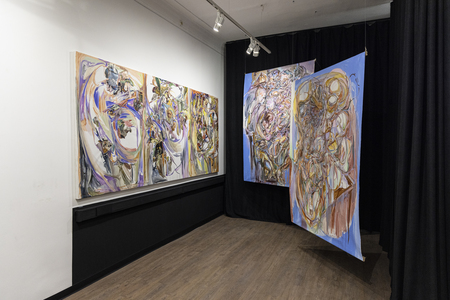
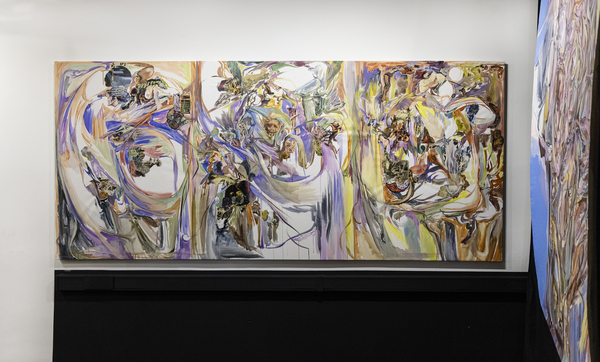
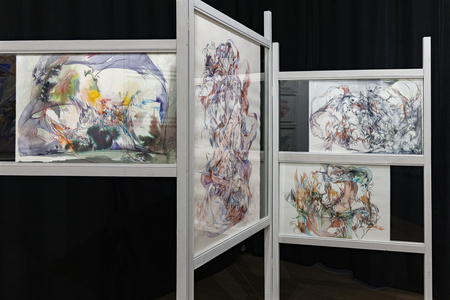
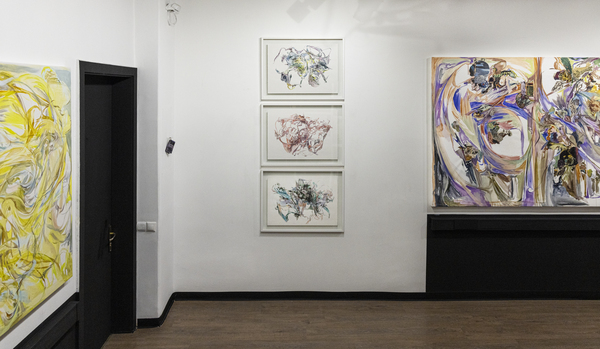
Perhaps the best form of Marya’s art exhibition would be a variable laboratory exhibition where an artist could change, supplement, rewrite, and do the work every day. Make it possible to continue the vitro that is present in each of its compositions, which is about to crawl out of a sheet or canvas that limits it. Mary’s art is risomatic in its structure, both internal and external. Confounded, multilayered, no center and no beginning. It’s a cloud of wool, cloaks, and threads that you can’t, and you don’t need to, untie. In each of her work, there is a moment of touching, a trace of movement, but not his vector. Trying to put these risomatic confused threads in an even sequence, to build a logical chain or a conceptual «carcass» means not only simplifying but also changing the nature of what is happening. It’s not gonna be Maria Dmitriev anymore. Its practice resists linearity and hierarchy — it spreads, branches, grows in all directions, as mycelium, as roots of plants that do not ask permission, where and why to reach. And then the value is not to untie this confused risoma and its explanation, but to the very act of braiding: complex, sensitive, infinite. The bonding of gestures, the material, the look, the breathing. Art production and exhibition as a collection of such works is what happens and changes the structure of what happens. But what exactly is going on? And if an act of art is an incident, what role does the artist himself play — a witness or an accomplice? The viewers are then asked to collect evidence, follow the scene, print, communicate with witnesses to collect their own version. The exhibition thus becomes not so much a display of completed works as an invitation to share in a state of confusion, excess, vulnerability. Such art does not tell or assert, but leaves traces — sensitive, material, fleeting. And maybe the real work here doesn’t happen in the object, but in us, in how we try to build our own trajectory through these balls, fragments, envelopes. Not to decipher and interpret by simplifying, but to survive and feel. Every job is a print and a trail, as a reminder that shape is not a final, but a transition. And what’s most important is not what we understand, but what’s left unsolved.
irreversible, 2025
